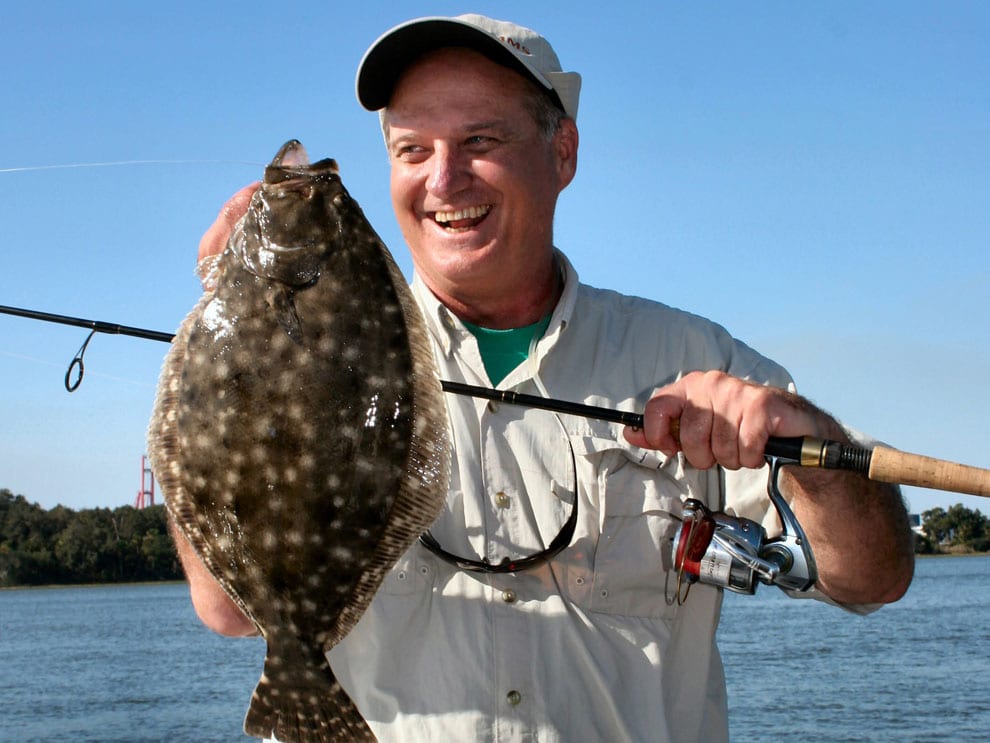Palm Coast November Fishing Report

Bob McNally; The Times Union
Creek bends, shallow flats, Inlets, docks and creek mouths, what do these areas have in common? Flounder, it’s that time of year when water temperatures (68 degrees) dictate flounder activity and the annual flounder run starts.
It’s fairly simple fishing as using a ¼ ounce Slayer Jig head with a finger mullet or mud minnow slowly dragged across the bottom. Other simple rigs consist of using split shots or an egg sinker (fish finder rig) and 14 inches of leader with a 3/0 Daiichi D16Z Octopus wide hook. For artificial applications any jig head and soft plastic combo (Z-man Paddle Tail) works well in deep water areas. Spoons, soft plastics and hard baits fished on shallow sandbars will produce flatties as well.
Flounder strikes or “thumps” as I like to call it are very distinct to other inshore game fish. When fishing for flounder patience pays a great part after feeling the “thump”. Flounder will grab a hold of your bait and sit on the bottom till bait stops moving around and that’s when the flounder will turn mullet or mud minnow around and swallow it head first which will initiate the second “thump”. Many “Old Salt” flounder anglers know the importance of feeling for flounder on the line by slowly lifting the rod tip to make sure the flounder is still attached to the line and then give some slack for about a minute before setting the hook.
Trout fisherman will get their limit and more using float rigs at Matanzas Inlet with shrimp being the top bait. The last 2 hours of outgoing tide and first of incoming is the locals preferred time to fish. Topwater plugs like a Spook Jr., Rapala or Mirrorlure can catch the biggest trout looking for a bite in the shallows or ICW drop offs at creek mouths. When the bite slows down on top switch gears to diving plugs like a Sebile Stick Shadd or curly tail grubs with a ¼ ounce Slayer jig.
Redfish will start to huddle in masses and seek the warmth of oyster beds during afternoon high tides. Long casting spoons or jerkbaits will produce. For scattered redfish live or cut mullet on a fish finder rig tossed around points, creek mouths or oysters will do the trick. During low tides look for reds cruising shallow mud banks with their backs out of the water chasing small grass shrimp. Matching the hatch (live shrimp) or a FishBites shrimp on a weedless hook tossed in front of a belly crawling redfish will result in a catch.
Capt. Chris Herrera
www.PalmCoastFishing.com
386-503-6338
